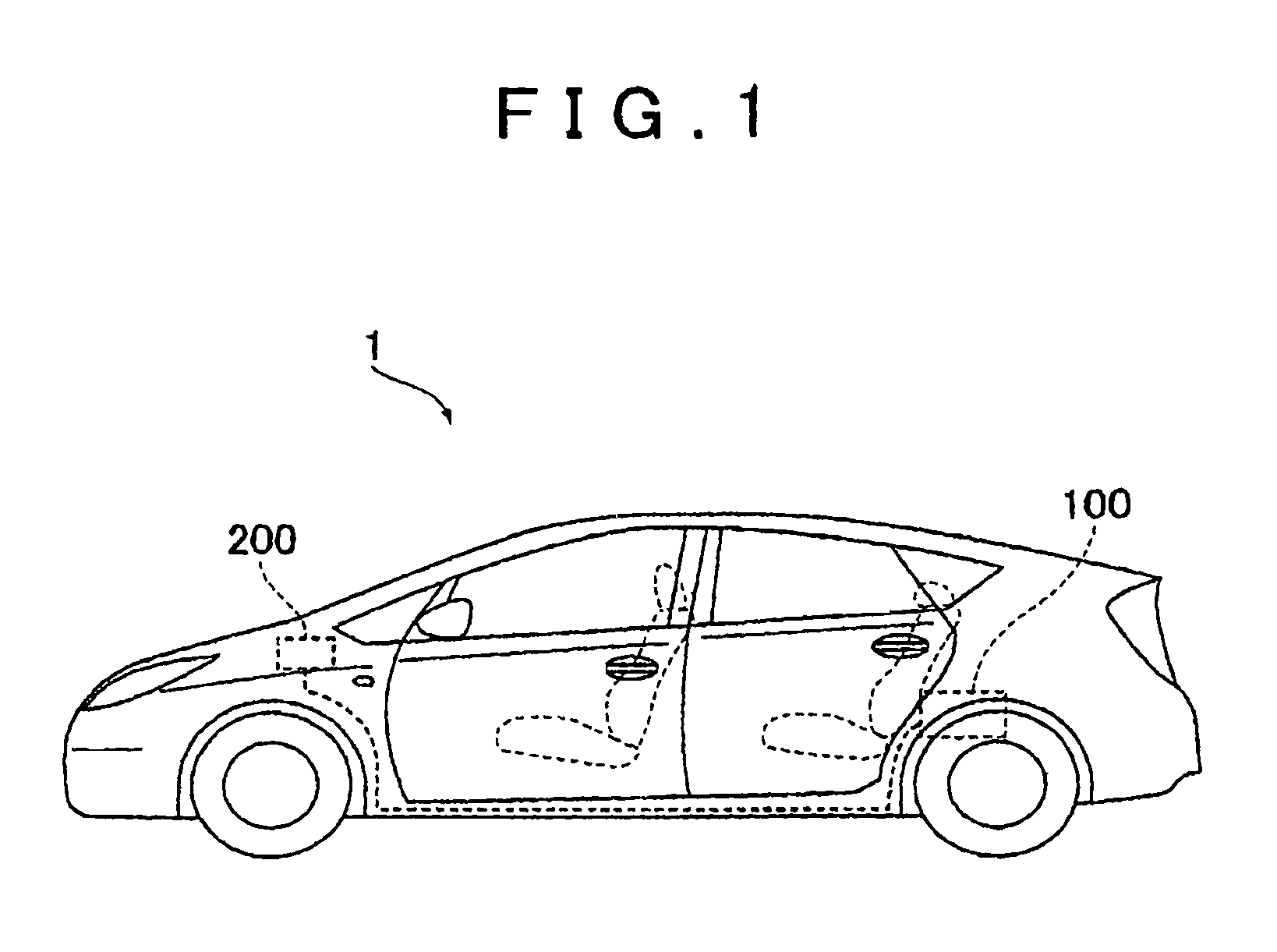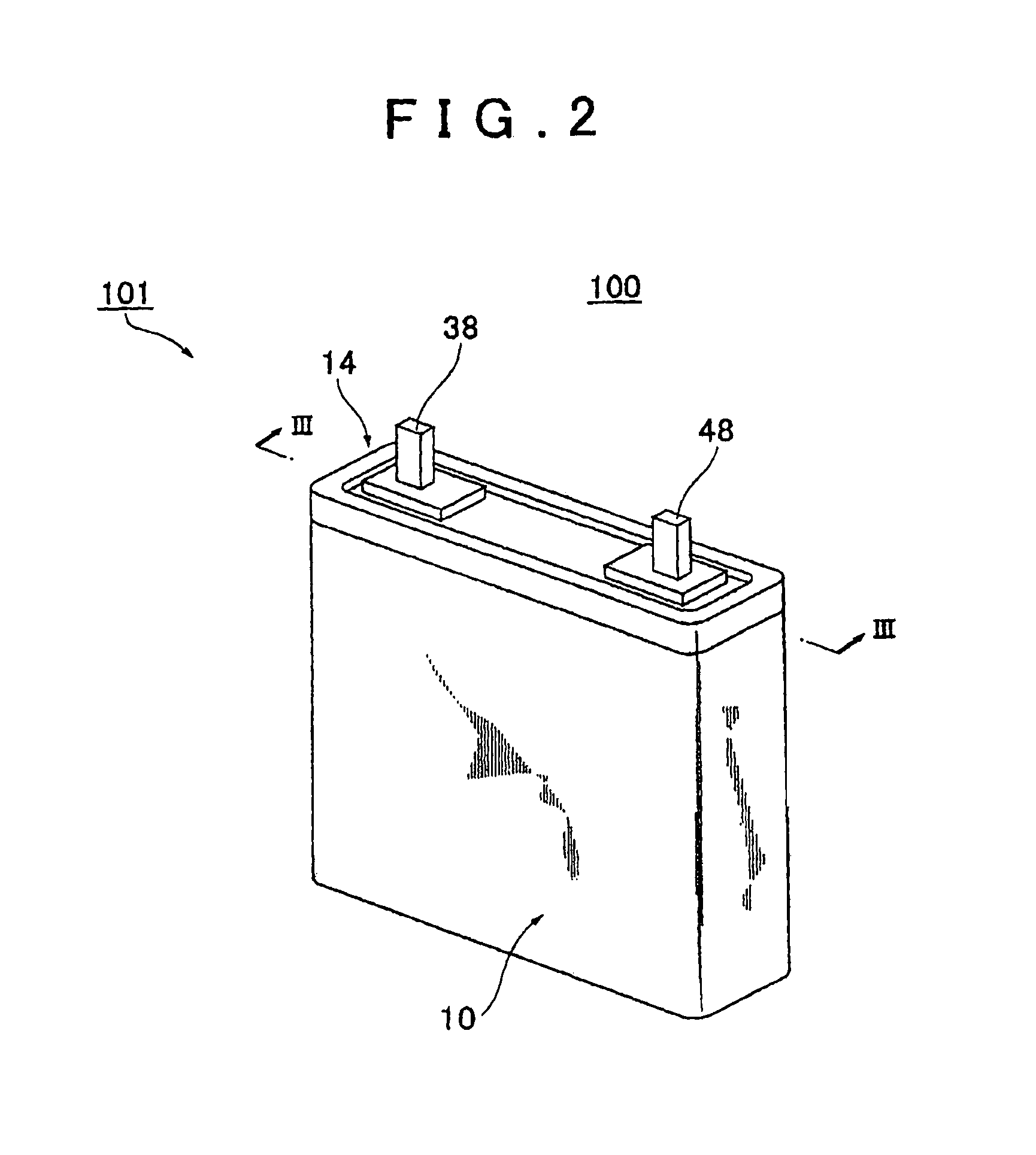Secondary battery reuse method, vehicle drive power source, and vehicle
a secondary battery and power source technology, applied in the field of secondary battery recycling, can solve the problems of inconvenient use, inconvenient use, and inability to meet the needs of vehicles, and achieve the effect of preventing the appearance of problems and malfunctions
- Summary
- Abstract
- Description
- Claims
- Application Information
AI Technical Summary
Benefits of technology
Problems solved by technology
Method used
Image
Examples
Embodiment Construction
[0035]Embodiments of the invention are described in detail in the following. Unless specifically stated otherwise, positional relationships, e.g., top and bottom, left and right, and so forth, are based on the positional relationships shown in the drawings. In addition, the dimensional ratios in die drawings are not limited to the ratios in the drawings. The following embodiments are examples for the purpose of describing the invention, but the invention is not intended to be limited to only these embodiments. Various modifications of the invention are possible insofar as they do hot depart from the essential features of the invention.
[0036]FIG. 1 is a schematic diagram that shows an embodiment of the vehicle according to the invention, in which a secondary battery used as a vehicle drive power source according to the invention is mounted. FIG. 2 is a perspective drawing that schematically shows the structure of a secondary battery cell that is provided in the secondary battery show...
PUM
| Property | Measurement | Unit |
|---|---|---|
| resistance | aaaaa | aaaaa |
| electrical characteristic | aaaaa | aaaaa |
| threshold value | aaaaa | aaaaa |
Abstract
Description
Claims
Application Information
 Login to View More
Login to View More - R&D
- Intellectual Property
- Life Sciences
- Materials
- Tech Scout
- Unparalleled Data Quality
- Higher Quality Content
- 60% Fewer Hallucinations
Browse by: Latest US Patents, China's latest patents, Technical Efficacy Thesaurus, Application Domain, Technology Topic, Popular Technical Reports.
© 2025 PatSnap. All rights reserved.Legal|Privacy policy|Modern Slavery Act Transparency Statement|Sitemap|About US| Contact US: help@patsnap.com



